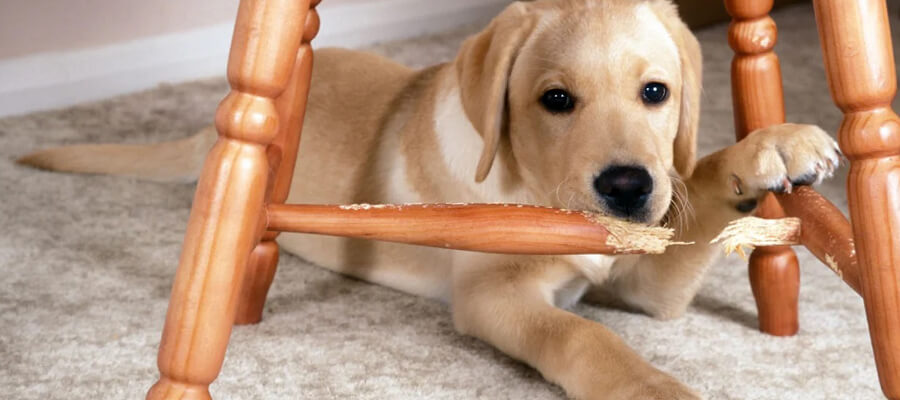
Updated on | by Critter Nets - Blogs
How to Stop Your Dog from Chewing Furniture
Stop Your Dog from Chewing Furniture
Introduction
Dogs are known for their playful nature, but when that playfulness turns destructive, it can be a challenge for pet owners. Chewing furniture is a common issue that many dog owners face, and it can be frustrating. This guide will provide you with effective strategies to prevent your dog from chewing furniture, ensuring both your furry friend and your home remain safe and intact.
1. Understanding the Reasons Behind Chewing
A. Natural Instinct
Essentials for Your Newly Adopted Pet
Welcoming a shelter pet into your life is a beautiful journey. Here are some handpicked items to help your new friend feel safe, loved, and right at home:
Chewing is a natural behavior for dogs. Puppies, in particular, explore their world with their mouths. Adult dogs may chew for various reasons, including boredom, anxiety, or teething.
B. Boredom and Lack of Exercise
Dogs that do not get enough physical and mental stimulation may resort to chewing furniture out of boredom. Providing regular exercise and mental challenges is essential to keeping your dog engaged.
C. Anxiety and Stress
Dogs may chew furniture as a coping mechanism for anxiety or stress. Changes in their environment, separation anxiety, or other stressors can trigger destructive chewing behavior.
2. Effective Strategies to Stop Chewing
A. Provide Appropriate Chew Toys
- Choose Durable Chew Toys: Invest in high-quality, durable chew toys designed for your dog’s chewing style. Look for options made of rubber or nylon that can withstand strong jaws.
- Rotate Toys: Keep your dog interested by rotating their toys regularly. Introduce new toys to keep their curiosity piqued.
B. Training and Commands
- Teach the "Leave It" Command: Train your dog to respond to the "leave it" command, which can redirect their attention from furniture to their toys.
- Positive Reinforcement: Whenever your dog chooses to chew on an appropriate toy instead of furniture, reward them with praise or treats. This reinforces good behavior.
C. Use Deterrent Sprays
- Bitter Apple Spray: Apply a bitter-tasting deterrent spray on furniture to discourage chewing. Dogs generally dislike the taste, which can help protect your belongings.
- Consistency is Key: Be consistent in applying deterrents and supervise your dog closely until they learn not to chew on the furniture.
3. Managing Your Dog’s Environment
A. Create a Dog-Friendly Space
- Designate a Chew Area: Set up a specific area in your home where your dog can safely chew their toys. This can be a cozy spot with their toys, blankets, and perhaps a crate.
- Block Access to Furniture: If possible, restrict your dog’s access to rooms with valuable furniture. Use baby gates or close doors to prevent access to these areas when you’re not around.
B. Increase Exercise and Mental Stimulation
- Regular Walks and Playtime: Ensure your dog gets plenty of exercise through walks, runs, and playtime. This will help reduce boredom and pent-up energy.
- Interactive Toys and Puzzles: Invest in interactive toys and puzzles that challenge your dog mentally. These can keep them occupied and distracted from chewing on furniture.
4. Addressing Anxiety and Stress
A. Identify Triggers
Take note of situations that trigger your dog’s anxiety, such as loud noises, new people, or being left alone. Identifying triggers will help you address the root cause of their chewing behavior.
B. Provide Comfort and Security
- Safe Space: Create a safe space for your dog with their bed, toys, and blankets. This can help them feel secure and reduce anxiety.
- Calm Music or White Noise: Consider playing calming music or using white noise to soothe your dog during stressful situations, such as thunderstorms or fireworks.
5. Consult a Professional
If your dog’s chewing behavior persists despite your efforts, consider consulting a professional dog trainer or a veterinarian. They can assess your dog’s behavior, provide tailored advice, and rule out any underlying health issues that may be contributing to the chewing.
Conclusion
Chewing furniture can be a frustrating issue for dog owners, but with patience and the right strategies, it is manageable. Understanding the reasons behind your dog's chewing behavior is the first step in addressing the problem. By providing appropriate chew toys, establishing consistent training, creating a dog-friendly environment, and addressing anxiety, you can help your dog develop better chewing habits. Remember that positive reinforcement and professional guidance can make a significant difference in curbing destructive chewing. With time and effort, you can protect your furniture while keeping your dog happy and healthy.
Affiliate Products
We may earn a small commission when you shop through our links — it helps us keep sharing love and care for every dog out there, at no extra cost to you.

